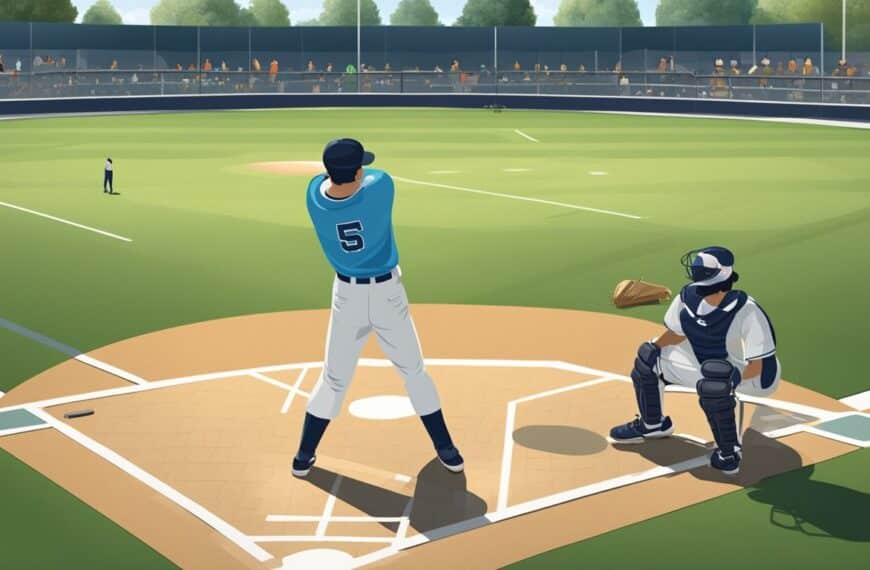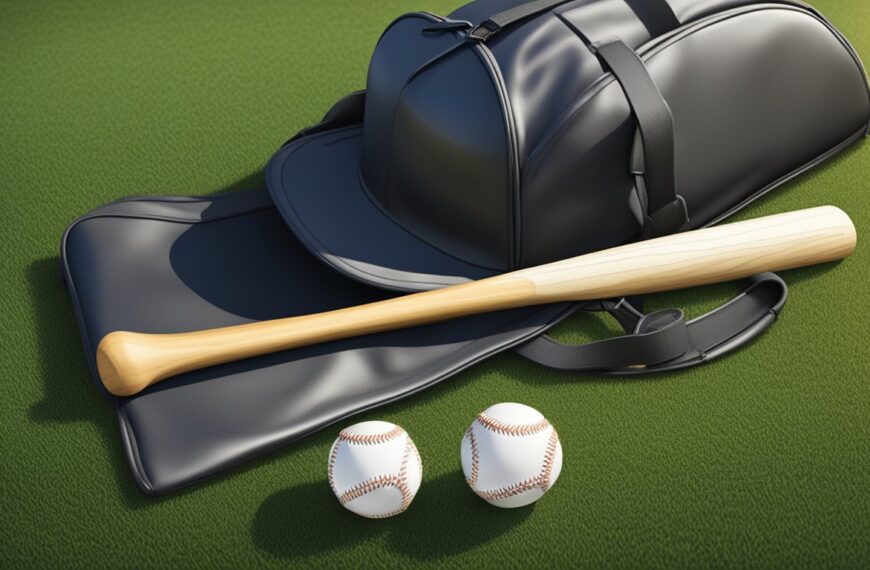Batting practice is a critical aspect of baseball and softball training, with the batting tee being a fundamental tool used by players at all levels. The use of a batting tee allows hitters to focus on their swing mechanics without the variables introduced by a live pitcher. Both indoor and outdoor batting tee practices have their own unique advantages, tailored to different training needs and environmental considerations. Indoor tee practice offers a controlled environment free from weather disruptions, allowing players to train consistently year-round. It facilitates the use of technology like video analysis, enhancing the feedback loop for technique refinement.
Outdoor batting tee sessions, on the other hand, provide batters with the opportunity to experience real-world conditions such as wind, sunlight, and natural turf. This setting is more representative of actual game conditions, helping players to adapt to the elements they will face in competition. Additionally, outdoor practices can sometimes accommodate a larger range of drills due to the open space available. The choice between indoor and outdoor tee practices often depends on the specific goals of the training session, the time of year, and the availability of facilities.
Key Takeaways
- Batting tee practices are integral to improving swing mechanics in both baseball and softball.
- Indoor tee drills offer controlled conditions and the ability to incorporate technology aids.
- Outdoor tee setups simulate real-game environmental conditions and accommodate expansive drills.
Benefits of Batting Tee Practices
https://www.youtube.com/watch?v=nDZImvVFHvg&embed=true
Batting tee practices offer targeted benefits to baseball and softball players by allowing them to hone various aspects of their hitting technique. These advantages manifest as tangible improvements in a player’s overall performance at the plate.
Enhancing Swing Mechanics
By using a batting tee, a player can repeatedly work on the minutiae of their swing mechanics. Tee work provides a static ball that allows hitters to concentrate on iterating through their swing without the variable of pitch delivery. Adjustments can be made in real-time to develop a more efficient swing path and better hand-eye coordination.
Improving Hitting Form
Practicing on a batting tee encourages a player to focus on their hitting form, ensuring they make consistent contact with the ball. It promotes a repeatable and good hitting form that is less likely to break down under game pressure. Fine-tuning the contact point can be achieved without the distraction of a moving pitch.
Building Player Confidence
Batting tees are instrumental in building player confidence. The repetitive nature of tee work allows hitters to experience success, reinforcing positive outcomes and developing a sense of self-assurance in their abilities.
Developing Eye for the Pitch
Although a batting tee does not simulate a moving pitch, hitters can still practice understanding the strike zone. Players adjust the tee to various heights and positions within the zone to practice swinging at pitches in different locations, thereby enhancing their eye for the pitch.
Versatility and Adaptability
A batting tee’s adjustable height makes it a versatile tool for players of all sizes. The use of durable materials, such as metal in a Tanner Tee, ensures longevity and adaptability to different environments, whether indoor or outdoor. Tee work allows hitters to adapt their approach to contact across the entire strike zone.
Indoor Batting Tee Drills
https://www.youtube.com/watch?v=XwHLwDVRjjU&embed=true
Indoor batting tee practices offer players the opportunity to hone their hitting mechanics and build consistency in their swings, regardless of weather conditions. These drills can be tailored to fit into smaller spaces and can be enhanced with various training aids.
Maximizing Limited Space
In settings where space is a premium, players can adjust the placement of their Tanner Tee to work on different aspects of their batting technique. For inside pitches, the tee can be positioned closer to the body, while it can be placed further away for outside pitches. This allows batters to practice hitting balls across the plate range, even in a condensed area. One can utilize a corner of a room or a batting cage to simulate a more constrained batter’s box.
Focus on Repetition and Consistency
The key to mastering swing mechanics is repetition. Using an indoor tee allows players to take a high volume of swings without the need to chase balls. Baseball and softball players should concentrate on consistent bat-to-ball contact, implementing the same swing path for each tee drill. For effective drill practices, hitters may:
- Perform 50 swings focusing on the lower half of the hitting zone.
- Follow with 50 swings aiming at the middle of the zone.
- Finish with 50 swings targeting the upper half.
Utilizing Training Aids
Training aids can significantly improve the quality of indoor tee drills. Equipment like weighted bats, swing trackers, or stance mats can provide immediate feedback on swing mechanics and outcomes. A training aid like a swing tracker can give valuable data on bat speed, angle, and contact point, enabling players to make data-driven adjustments. Using these aids, players can focus on specific aspects of their swing, such as:
- Hand path: Ensure hands move directly to the ball.
- Balance: Maintain an even weight distribution throughout the swing.
- Follow-through: Complete each swing with a full extension towards the point of perceived contact.
Outdoor Batting Tee Setups
https://www.youtube.com/watch?v=qgZopOOf6NI&embed=true
Outdoor batting tee setups allow for a practice environment that acknowledges real-world factors such as wind and sunlight. These setups can be highly beneficial for enhancing a player’s adaptability to different pitching styles and outdoor conditions.
Incorporating Environmental Factors
When practicing outdoors, players must contend with various environmental factors. For instance, a tee placed in direct sun can simulate daytime game conditions, helping batters to adjust their vision and timing. Coaches can also utilize the wind to teach hitters how to drive the ball in crosswind or headwind situations.
- Wind Conditions: Practice driving the ball into the wind for increased power.
- Sunlight: Use sunglasses or time practice to replicate game-day lighting.
Expanding Drill Types
A variety of drills are possible with an outdoor setup that might not be feasible indoors. Coach pitch and soft toss from different angles can help batters work on hitting inside pitches and outside pitches effectively. Utilizing equipment like a Tanner heavy tee can improve swing mechanics and strength. With the ability to easily move the tee around the diamond, hitters can also simulate opposite field hitting scenarios.
- Drill Types:
- Front Toss: Improve timing and pitch recognition.
- Soft Toss: Focus on offspeed pitches and placement.
Real-World Hitting Scenarios
An outdoor setup permits the simulation of live-game conditions that are difficult to replicate indoors. Live pitching machine workouts and live pitching simulate real pitchers, enabling hitters to practice timing and pitch tracking under realistic conditions. In the vast space of an outdoor setup, players can see the true trajectory of their hits, allowing them to fine-tune their swings to aim for gaps in the field or to adjust power for fence-clearing shots.
- Live Hitting:
- Place tee at various positions in the batter’s box to practice hitting pitches in all parts of the strike zone.
- Asses ball trajectory and landing for feedback on contact quality.
Selecting the Right Batting Tee
Selecting the ideal batting tee requires considering materials for durability, adjustability for practice versatility, and performing a cost-benefit analysis to ensure the best value.
Considering Tee Material and Durability
When choosing a batting tee, the material is a crucial factor that determines its longevity and resilience. Metal batting tees, such as the Jugs T Pro Style Batting Tee, are renowned for their durability and heavy-duty construction, making them a favorite for serious players. These tees often feature a solid metal base that resists tipping and withstands repetitive use.
In contrast, plastic or PVC tees tend to be more affordable but might not sustain the same level of wear and tear as metal options. Weighted bases on tees help mimic the stability of home plate, and a durable tee can withstand the elements if left outdoors.
Adjustable and Versatile Tees
A tee’s adjustability directly affects its ability to cater to different drills and players of varying heights. The Tanner Tee, for example, is well-known for its adjustable heights, enabling hitters to practice swings for pitches across the strike zone. An adjustable tee should smoothly transition between different heights and remain stable during practice.
Tees with a broad range of adjustability provide a more versatile training experience and can grow with younger players. Versatile tees often have various features to facilitate hitting drills that focus on both low and high pitches.
Cost-Benefit Analysis
When it comes to cost, baseball batting tees can range from cheap and basic models to premium tees with additional features. The price often reflects the materials used and the tee’s durability. Serious players may find that investing in a higher-priced tee, such as the Jugs T Pro Style, which is considered by many as the best baseball batting tee for its heavy-duty construction, is more cost-effective in the long run.
A proper cost-benefit analysis will compare the initial price of the tee, its durability, and additional features against the expected lifespan and the value of the practice it enables. A cheaper tee may save money upfront but can lead to additional costs if it needs to be replaced frequently.
Advanced Tee Work Techniques
https://www.youtube.com/watch?v=qYyfGdm-YNc&embed=true
Incorporating advanced tee work techniques into practice is essential for developing refined swing mechanics and increased power. Precision and focused drills enhance a player’s ability to make solid contact consistently.
Perfecting the Swing Path
To master the ideal swing path, players must understand the importance of a level swing that stays within the strike zone. A technique for achieving this is to set the tee at varying heights and practice hitting through the ball to the opposite field. This ensures the bat’s sweet spot makes contact while maintaining a rock-solid footing.
- Drill 1: Set the tee low and focus on driving the ball upward, reinforcing a positive attack angle.
- Drill 2: Position the tee high to encourage the player to keep their swing level, avoiding uppercuts.
Targeting Specific Hitting Zones
Players can increase their bat control and precision by practicing hits into specific zones. Using a tee, they can simulate pitches across different parts of the strike zone to hone their hand-eye coordination.
- Inner Zone: Aim to hit using the inner third of the bat to simulate inside pitches.
- Outer Zone: Focus on extending the arms for pitches on the outer third.
Drills for Power Hitters
Power hitters benefit from drills that combine power and bat speed with a fundamental focus on generating force from the lower body.
- Weighted Bat Swings: Perform a series of cuts with a heavier bat to increase strength.
- Rapid Fire Tee: Hit multiple balls off a tee in quick succession to boost explosive power and endurance. Use a timer to add a sense of urgency.
Utilizing the rubber top of the batting tee and a firm, controlled grip, players can maximize their swing efficiency and develop the muscle memory necessary for successful hitting in actual games. Through these advanced drills, they can address minor flaws in their technique and prepare to face live pitching with confidence.
Integrating Batting Tee Practice in Coaching Routines
https://www.youtube.com/watch?v=pzvT71bYw8A&embed=true
Coaching routines that integrate batting tee practice can effectively enhance a hitter’s technique and confidence. By structuring training sessions, analyzing performance, and making data-driven adjustments, coaches can maximize the effectiveness of this drill.
Designing Progressive Training Sessions
Coaching staff should develop a clear plan for progressive training sessions with batting tees. Initially, they should focus on basic hitting mechanics with less complexity, such as stance and swing path. As the hitter gains confidence, the sessions can gradually incorporate more challenging elements like varying pitch locations and speeds. Coaches can use a combination of indoor and outdoor settings to address different aspects of hitting. Sessions can be structured as follows:
- Warm-Up: Basic swings focusing on form and balance.
- Skill Development: Targeted drills for specific hitting zones.
- Advanced Techniques: Situational hitting and adjusting to different pitch speeds.
Incorporating Video Analysis
The use of video analysis plays a critical role in batting tee practice. Coaches should record hitters during drills to provide immediate visual feedback. This helps identify areas that need improvement, such as the angle of swing or point of contact. Analyzing video allows coaches and players to see the following:
- Swing Mechanics: Break down the components of each swing.
- Consistency: Track the batter’s ability to replicate good swings.
- Progression: Compare current sessions with past ones to gauge development.
Feedback and Adjustments
Effective coaching includes providing timely feedback and adjustments. After each batting tee session, the coach should give specific, actionable feedback on what the hitter did well and what could be improved. Adjustments could be physical, like changes in grip or stance, or mental, like strategies for handling pressure. Consistent and constructive feedback reinforces positive behaviors and alters ineffective ones, impacting the hitter’s:
- Technique: Fine-tuning the elements of their swing.
- Confidence: Building trust in their ability to hit effectively.
- Feeling: Developing a kinesthetic sense for proper swing execution.
The Role of Batting Tees in Professional Training
https://www.youtube.com/watch?v=hXWwZkQ7rII&embed=true
Batting tees are instrumental in honing the hitting skills necessary for both baseball and softball at the professional level. Emerging from youth baseball, these training aids have become a mainstay in professional players’ routines.
From Amateur to Professional Routines
Traditional batting tees have evolved into more sophisticated equipment like the G Tee, which allows for a wide array of adjustments to accommodate different strike zones and swinging angles. In professional baseball, they facilitate the transition from amateur to professional by providing a consistent, reliable platform for players to work on their swing mechanics. Professionals often emphasize tee workouts to focus on isolating specific hitting skills, such as hand-eye coordination and point of contact accuracy.
Tee Practices in Seasonal Training
During the season, batting tee training adapts to the needs of players to maintain their skills. It’s not uncommon for professional baseball teams to use tees for daily batting practice, ensuring that players can refine their technique year-round, regardless of weather and pitch availability. The use of tees in seasonal training includes:
- Pre-season: Building basic skills and preparing for live pitching.
- In-season: Maintaining swing mechanics and making minor adjustments.
- Off-season: Addressing weaknesses and developing new hitting strategies.
The versatility of a tee as a training aid enables professionals to practice indoors or outdoors, making it an essential tool in any weather or season.
User Experience with Various Batting Tees
https://www.youtube.com/watch?v=TK6CEmZ7o5c&embed=true
In the realm of batting practice, user experience is largely influenced by the equipment’s design and function. Players’ feedback reflects the effectiveness, durability, and usability of batting tees.
Reviews from Casual to Serious Players
-
Casual Players: Many casual players favor the Tanner Tee for its simplicity and its lightweight design. They often note the ease of assembly and transport, making it a go-to choice for impromptu backyard sessions.
-
Serious Players: For those dedicated to honing their skills, the JUGS T Pro Style Batting Tee stands out for its durability and stability—an essential benefit for repeated use. Players praise its solid base, which limits tee movement during intense hitting sessions.
Comparisons of Popular Brands
Tanner Tees:
- Features: Adjustable height, rolled rubber top
- Feedback: High marks for versatility and the fine-tuned feel it gives when striking the ball. Often noted as the best baseball batting tee for its consistent performance.
JUGS T Pro Style:
- Features: Patented internal interlocking bolt design, professional-grade base
- Feedback: Users are impressed with its sturdiness and long-term use without signs of wear. The heavyweight base is frequently highlighted as a key factor in players’ consistent hitting techniques.
Frequently Asked Questions
The questions below address common inquiries regarding the use of batting tees for baseball practice, offering specific advice tailored to optimizing training sessions.
How can I select the best batting tee suitable for my training needs?
The selection of a batting tee should be based on durability, adjustability, and stability. Assess the material quality and height range to ensure it meets the versatility of indoor and outdoor training requirements.
What is the ideal placement of a batting tee for practicing outside pitches?
For practicing outside pitches, the batting tee should be placed on the outer half of home plate and slightly in front of the batter’s front foot. This positioning helps to simulate the path of an outside pitch.
Can regular practice with a batting tee improve overall batting skills?
Regular practice with a batting tee can significantly improve a batter’s swing mechanics, hand-eye coordination, and muscle memory, contributing to better batting skills over time.
Which batting tees are preferred by professional MLB players?
Professional MLB players often prefer heavy-duty, high-grade batting tees that offer a wide range of adjustability and can withstand thousands of swings. Brands like ATEC and Tanner are popular among pros.
What are innovative outdoor batting cage flooring solutions to enhance practice?
Outdoor batting cages benefit from flooring solutions like turf or specialized rubber tiles that mimic the feel of a real field and provide shock absorption, improving both the practice experience and equipment longevity.
Are there any significant differences between softball and baseball batting tees?
Softball and baseball batting tees differ primarily in base design and height ranges. Softball tees may have a broader base for stability when hitting larger balls and can be adjusted for the higher pitch arcs typical in softball.










